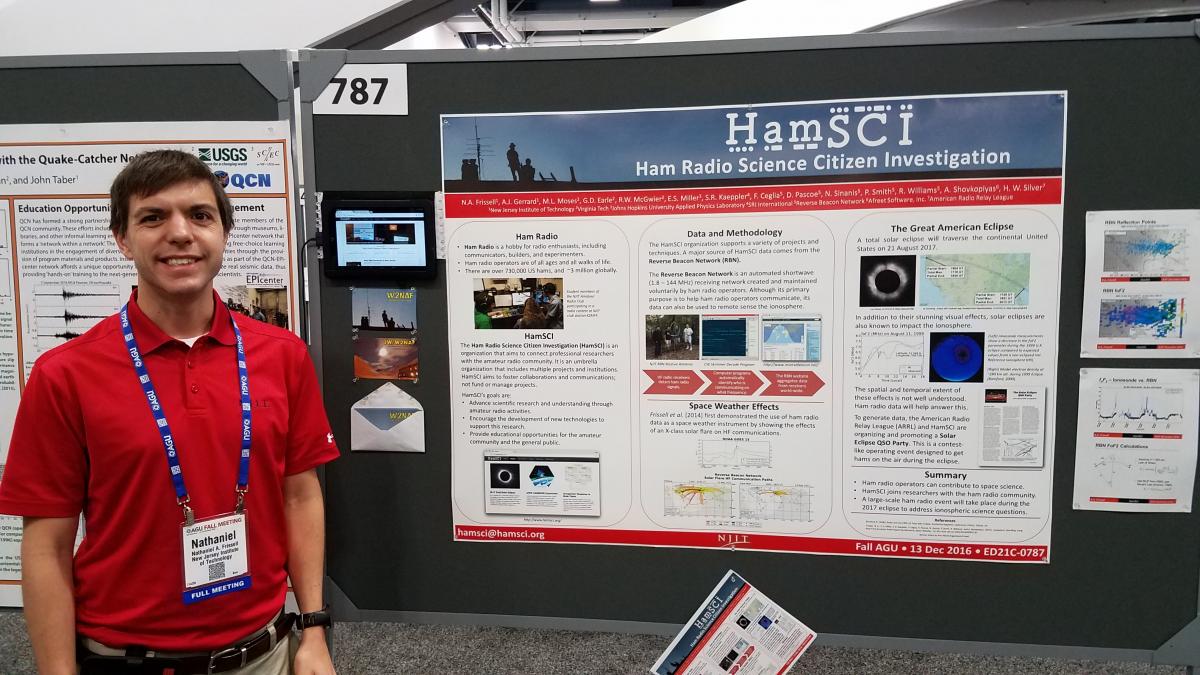HamSCI at the 2016 Fall AGU Meeting
HamSCI at the 2016 Fall AGU Meeting
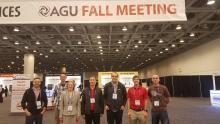
HamSCI scientists met at the Fall American Geophysical Union (AGU) meeting in San Francisco during the week of December 11–17, 2016. The Fall AGU meeting is one of the largest gatherings of geoscientists in the world, with approximately 24,000 people attending. During the meeting, HamSCI scientists presented ham radio-based research, discussed possibilities for upcoming experiments, and networked with members of both the Citizen Science and Space Science Communities.
New Jersey Institute of Technology (NJIT) Post-Doc Nathaniel Frissell, W2NAF, presented “HamSCI: The Ham Radio Science Citizen Investigation” in the education/outreach session Citizen Science with Big Data: Intersection of Outreach, Crowd-Sourced Data, and Scientific Research. Dr. Frissell’s presentation described the ham radio hobby and the three objectives of HamSCI: (1) advance scientific research and understanding through amateur radio activities (2) encourage the development of new technologies to support this research, and (3) provide educational opportunities for the amateur community and the general public. Frissell showed ways that the Reverse Beacon Network can be used as a scientific instrument and also discussed the upcoming Solar Eclipse QSO Party (SEQP).
Virginia Tech (VT) Undergraduate Researcher Magda Moses, KM4EGE, presented “Characterizing the Ionosphere Using a Commercial Off the Shelf Software Defined Radio System” in the Developing Critical Measurement Strategies in Ionosphere/Thermosphere/Mesosphere Research: Ideas and Priorities session. Moses ran propagation experiments between Blacksburg, VA and Newark, NJ using Flex 6300 radios. This was done to help understand ways of using high frequency (HF) links to characterize the ionosphere during the 2017 Total Solar Eclipse. Moses first presented ray trace diagrams through an eclipsed ionosphere, and then used propagation test data to show that the 80 meter ham band was most useful for identifying diurnal (day-night) variations along the Blacksburg-Newark propagation path.
A general HamSCI meeting was held on Tuesday afternoon, with eight members in attendance. Members talked about rules for the upcoming Solar Eclipse QSO Party, installation of additional Reverse Beacon Network receivers, use of data from other networks such as WSPRNet, the design of better measurement techniques, and possibilities for future HamSCI experiments. Plans for the Dayton 2017 Hamvention were also discussed. This includes a display table and the program for a 90 minute ARRL-sponsored forum.
The Fall AGU meeting also offered many opportunities to network with other scientists and projects. HamSCI members Nathaniel Frissell and Magda Moses attended the Solar Eclipse Citizen Science Meeting of Opportunity, where they met with NASA Heliophysics Science Division Associate Director Dr. Alex Young, as well as Rice University Professor and AGU Fellow Dr. Patricia Reiff, W5TAR. Dr. Reiff has been incorporating amateur radio into her university teaching for many years with a masters-level course PHYS 501: Physics of Ham Radio. HamSCI also met with Dr. Shing Fung and Dr. Chuck Higgins of the Radio Jove project, as well as with Dr. Elizabeth MacDonald and Dr. Burcu Kosar of the Aurorasaurus project. HamSCI looks forward to strong collaborations with these citizen science projects in the future.
The 2016 Fall AGU meeting has been extremely important for presenting HamSCI’s work and strengthening ties with both the Space Science and Citizen Science communities. In the upcoming months, HamSCI will be most focused on preparing for the 2017 Total Solar Eclipse. An introductory Solar Eclipse QSO Party article is scheduled to be published in the February 2017 issue of QST. Final SEQP rules will be available no later than the May 2017 Dayton Hamvention.
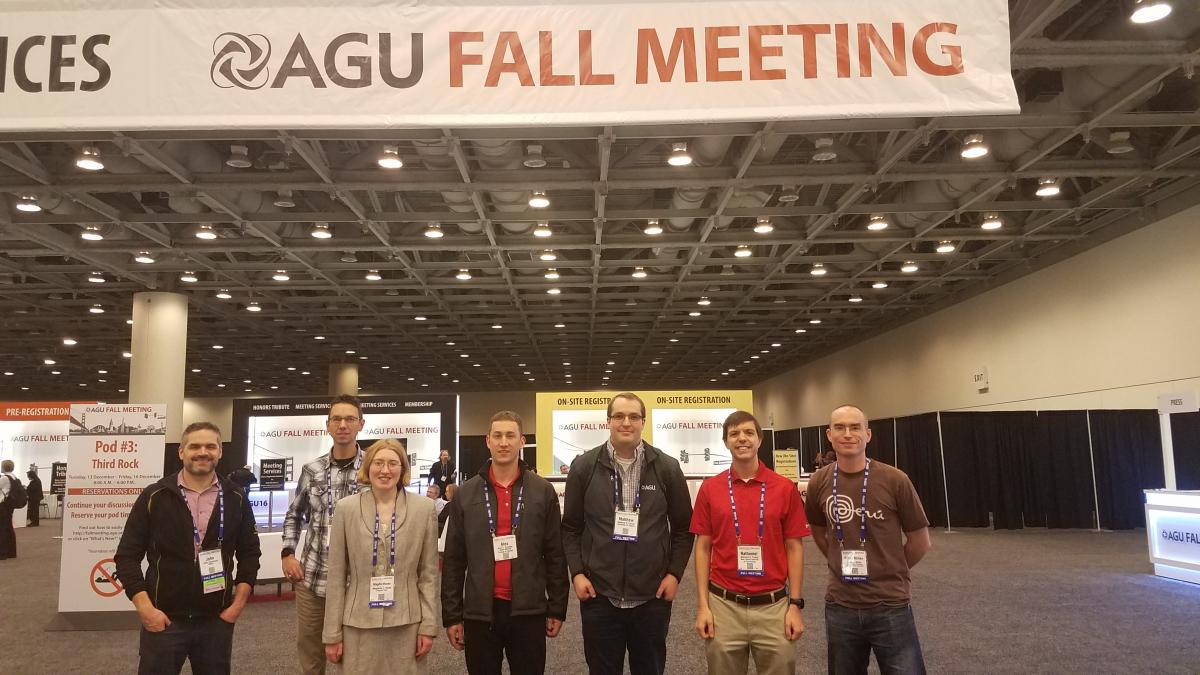
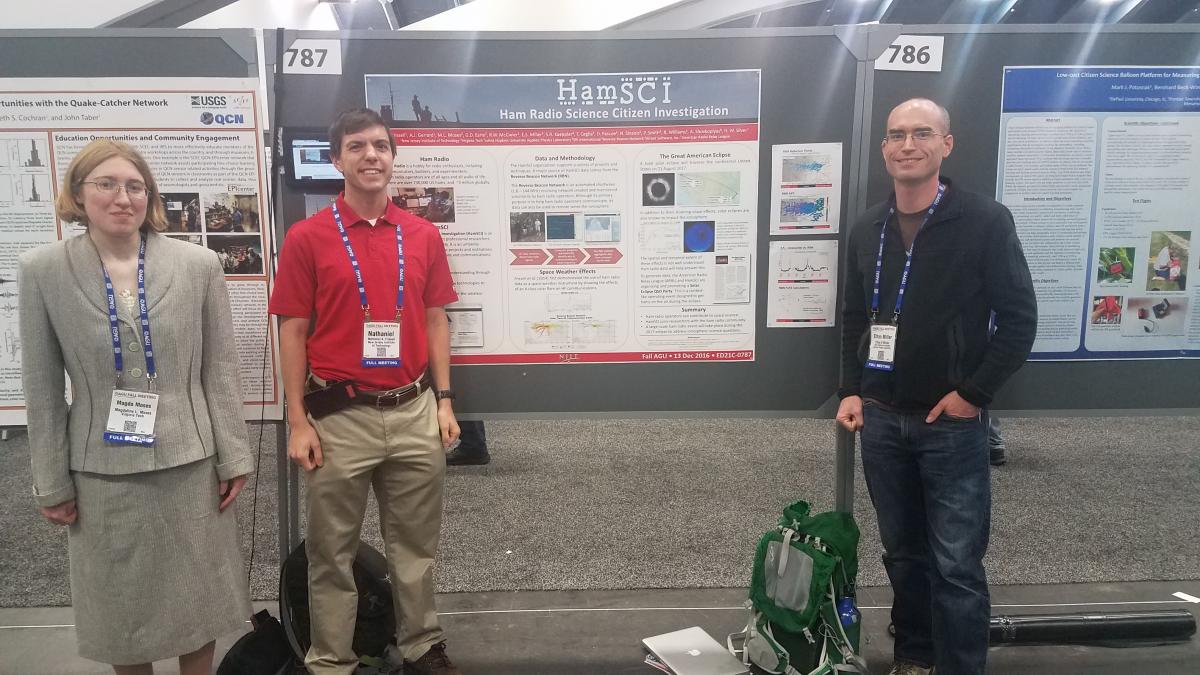
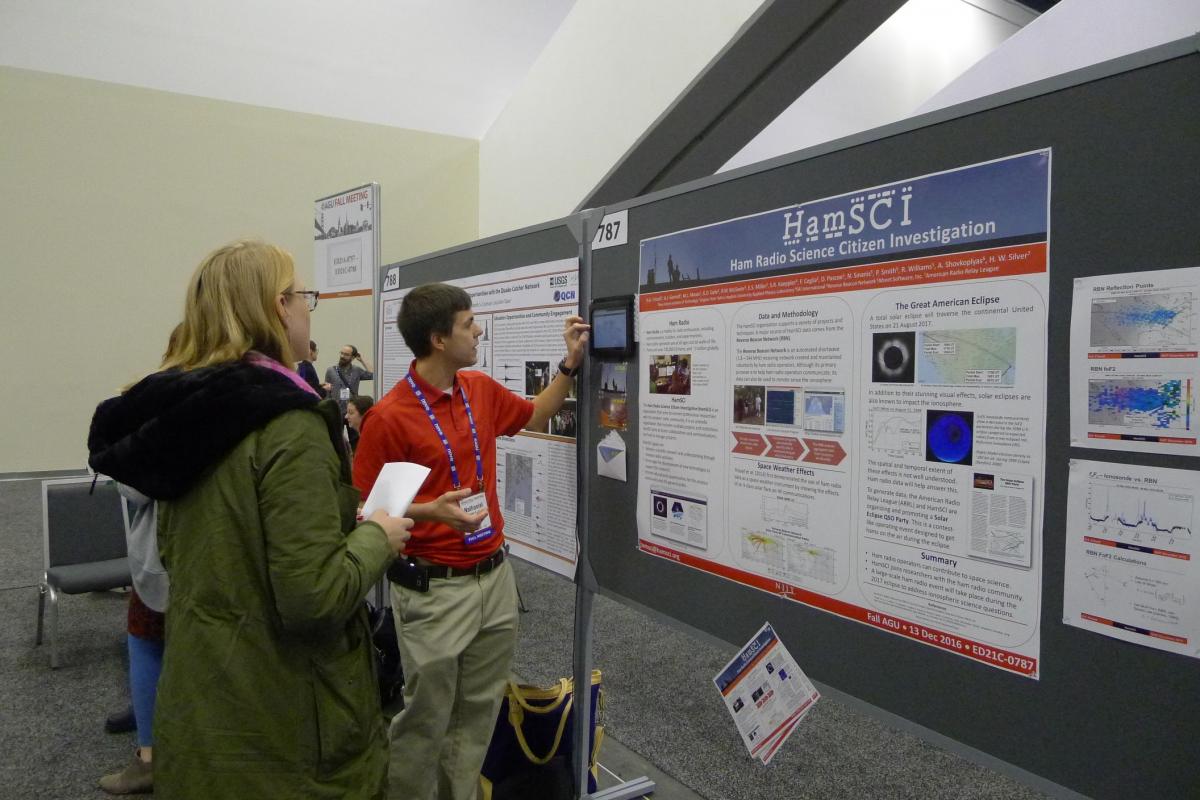
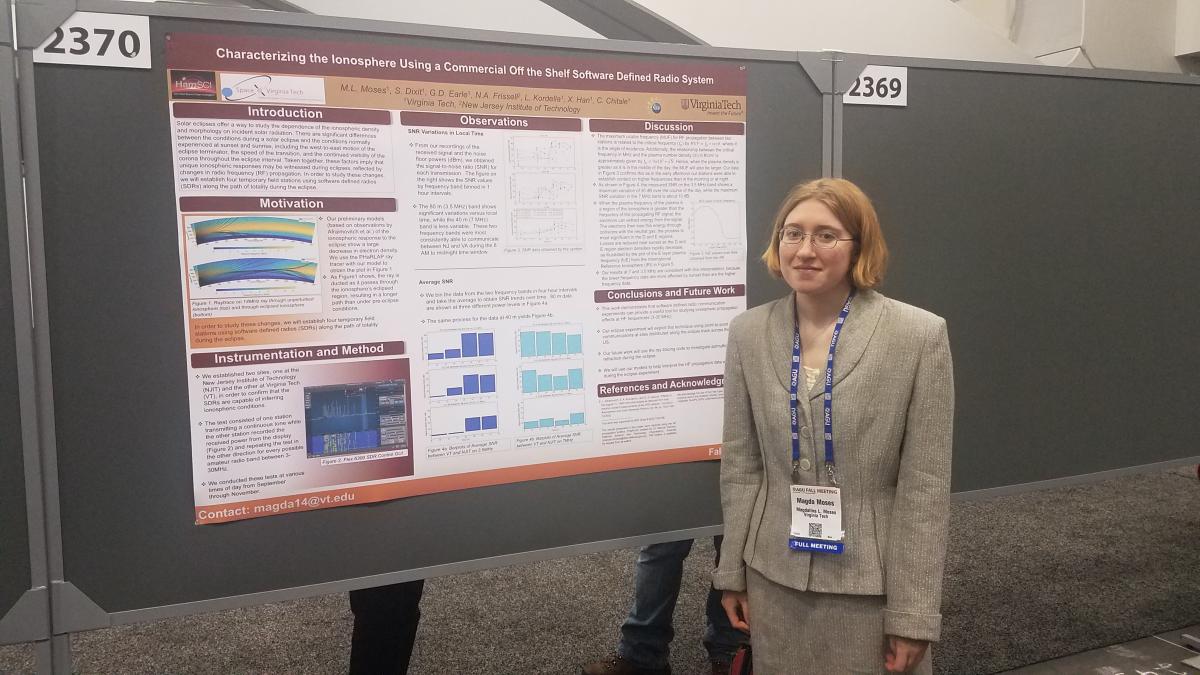
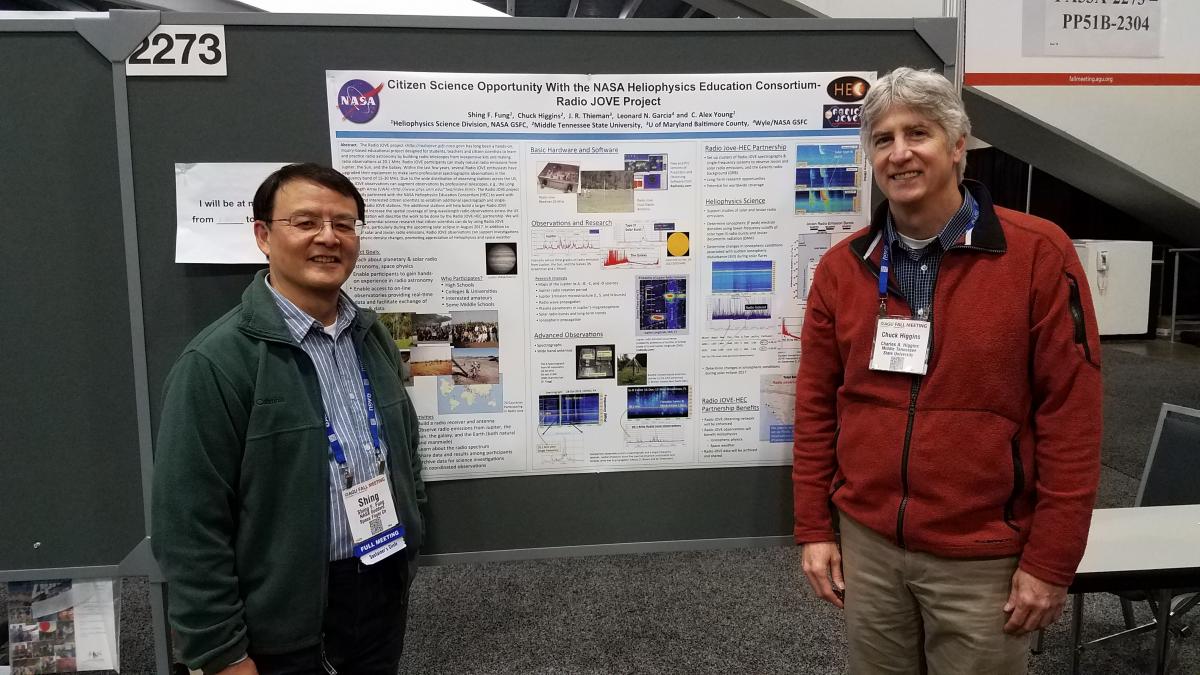
Shing Fung and Chuck Higgens presenting on Radio Jove

